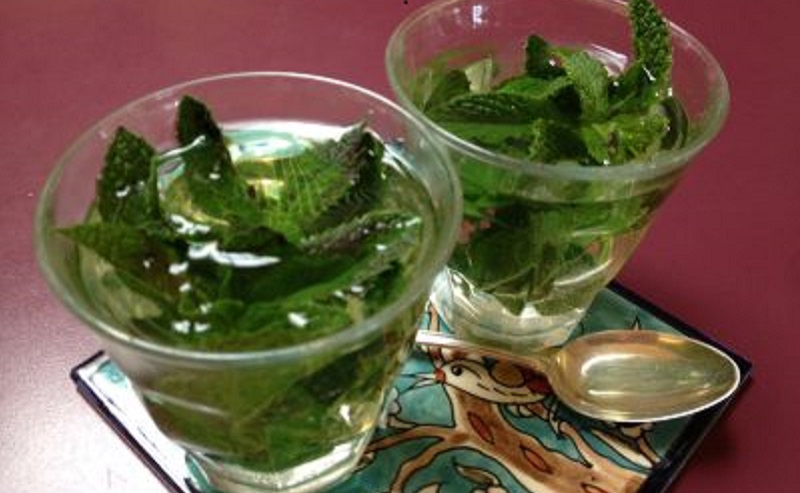Tea — when is it not just tea? When we lift up the experience and the moment with a ritual.
The Japanese Tea Ceremony or “Way of Tea” is a well-known ritual. Not so well-known are the requirements for preparing tea and coffee on the Sabbath if you are an Orthodox Jew.
A number of years ago I lived in an Orthodox Jewish community. I often had people to my home for Sabbath dinners on Friday evening or lunches on Saturday afternoon after synagogue.
The food for these meals all had to be prepared before the Sabbath began since cooking is prohibited on the Sabbath. Hot drinks such as tea must be prepared according to halachah, which results in a Jewish version of the Tea Ceremony.
Making Tea or Coffee on Shabbat
“One may not pour the hot water from the kettle directly onto an uncooked solid or liquid since this would be considered cooking. Coffee, tea, and cocoa fall into this category. Therefore, to make tea or coffee on Shabbat, use the following method:
- Pour the hot water from the kettle into a clean, dry cup;
- pour the water from this cup into another cup; and
- then add teabag, tea essence, coffee, sugar or milk. If using a teabag, do not squeeze it.
- If using a teabag, do not remove the bag from the drink.
“Some authorities recommend that instead of using teabags, a special concentrated “tea essence” be prepared before Shabbat. One cup of tea essence is prepared by allowing six teabags to steep in a cup of boiling water. Use one tablespoon of this concentrate to make a cup of tea.” ~ Food Preparation on Shabbat
Coffee Bags and a Shayla
At first glance, it appears that the simple act of brewing a cup of tea has been made complicated. Still, hot tea is a possibility, and observant Jews regularly enjoy it on the Sabbath.
Coffee always seemed a little different . . . until the advent of coffee bags. Generally coffee is brewed in advance of the Sabbath and held warm in an urn. An alternative is instant coffee with water heated in advance of the Sabbath and held warm. Some of my friends prepared a coffee essence and diluted it with pre-heated water. As coffee lovers can imagine, these techniques don’t result in the best coffee.
And then one day, much to my delight, I discovered coffee bags in the store, which worked just like teabags. At one of my luncheons after synagogue when the time came for us to enjoy our tea, I brought out the coffee bags as well. I had a shayla for my friends, a question. Could coffee bags be used in the same way as tea bags on the Sabbath?
An hour later we were still debating the possibility of making coffee with bags on Shabbat just the way we made our tea — and the techniques that would make it allowable! I confess I experienced some impatience. I now realize that my impatience closed the window on an opportunity for a profound spiritual experience.
Ritual sanctifies the mundane and centers consciousness
It occurs to me that this particular way of engaging in a joyful activity, drinking tea (or coffee) with friends on Shabbat while paying attention to the rules and regulations that shape this space in time, is a ritual event. Considering in detail how to conduct the ritual, as my friends were doing that day, centered consciousness and was an act of devotion.
Ritual is a way of sanctifying the mundane, of setting a moment apart from all other moments and calling on us to stop and be aware. Only awareness and intentionality separate ritual from routine and habit.
The choice to enjoy tea and coffee with friends in that place, in that time and in that way was fully intentional. The ritual of tea and coffee drinking on the Sabbath in a particular way made a mundane act into a sacred event, offering an opportunity for full awareness in the moment.
Although I love good coffee, I still prefer Tea with Nana (mint) in these special moments. Be sure to check out my recipe!
Making Tea with Nana (mint)
Even when it is not the Sabbath, preparing Tea with Nana can be a beautiful ritual. Drinking the tea is only one part of it:
- Select beautiful, fresh mint with stems that have not turned woody, preferably from an area that has not been subjected to pesticide sprays.
- Immerse in cold water to remove sand or debris.
- Remove the mint from the water and allow to drain in a sieve for a few moments.
- If not using right away, wrap the mint loosely in paper towel.
- Bag mint with paper towel and store in the vegetable bin of the refrigerator.
When you’re ready to make the tea:
- Choose a clean glass that is an appropriate tea size. Pamper yourself with beautiful Moroccan style tea glasses!
- Remove a bunch of mint from what you have prepared, leaving the leaves attached to the stem but removing any unsightly stem pieces.
- Fill your glass with the mint, stems down.
- Bring a pot of water to a full boil.
- Pour the water into the glass over the mint leaves and allow to steep.
The water will turn light green as the mint steeps, ready for you to enjoy the beautiful aroma of fresh mint.
You can drink the tea just like this or drop a tea bag into the water briefly to steep until the tea is the strength you enjoy.
This simple tea when made correctly will be clear and beautiful with a wonderful aroma. It is delightful to sip at any time of year, alone or with friends.


